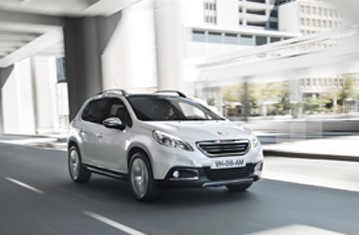Find more information in the General Comments section of the assessment
Find more information in the Rating Validity tab of the assessment
- See More
- See More
- See More
- See More
- Good
- Adequate
- Marginal
- Weak
- Poor
 Passenger
Passenger
 Driver
Driver
 Front Seat
Front Seat
 Car
Car
 Pole
Pole
- Good
- Adequate
- Marginal
- Weak
- Poor


Passenger
outboard
center
Fitted to the vehicle as standard
Not fitted to the test vehicle but available as option
Not Available
-
Infants up to 13 kg
-
Infants and toddlers up to 18 kg
-
Toddlers from 9 to 18 kg
-
Toddlers over 18 kg
Easy
Difficult
Safety critical
Not allowed
| Seat Position | ||||
|---|---|---|---|---|
| Front | 2nd row | |||
| Passenger | Left | center | Right | |
| Maxi Cosi Cabriofix (Belt) | ||||
| Britax Römer King Plus (Belt) | ||||
| Britax Römer Duo Plus (ISOFIX) | ||||
| Britax Römer KidFix (Belt) | ||||
| Maxi Cosi Cabriofix & EasyFix (Belt) | ||||
| Maxi Cosi Cabriofix & EasyFix (ISOFIX) | ||||
| BeSafe iZi Kid X3 ISOfix (ISOFIX) | ||||
| Maxi Cosi Pearl & Familyfix (ISOFIX) | ||||
| Britax Römer KidFix (ISOFIX) | ||||
Easy
Difficult
Safety critical
Not allowed
Dynamic tests were carried over from the Peugeot 208. In the frontal impact, forward movement of the head of the 3 year dummy, sat in a forward facing restraint, was not excessive. In the side impact, both dummies were properly contained by the protective shells of their restraints, minimising the likelihood of contact with parts of the car's interior. The passenger airbag can be disabled by means of a switch to allow a rearward facing child restraint to be used in the passenger seat. However, information provided to the driver regarding the status of the airbag is not clear and the system was not rewarded. There were clear warnings of the dangers of using a reaward facing restraint in that seating position without having deactivated the airbag. A check of the installation of child restraints showed that all restraint types for which the car is designed could be properly installed and accommodated in the 2008.
- Good
- Adequate
- Marginal
- Weak
- Poor

Head Impact 16.0 Pts
Pelvis Impact 4.2 Pts
Leg Impact 6.0 Pts
The methodology for testing pedestrian protection has changed since the 208 was assessed in 2012, and new tests have been done. The bonnet surface showed good or adequate protection over most of its surface, with poor results recorded only at the base of the windscreen and on the stiff windscreen pillars. The bumper scored maximum points for its protection of pedestrians' legs while the front edge of the bonnet gave good or marginal protection to the pelvis region.
- Good
- Adequate
- Marginal
- Weak
- Poor
| Speed Limitation Function | Manually Set |
| System Name | ESP | |
| Performance | ||
| Vehicle Yaw Rate @ COS + 1.00 s | 7.229% | meets ECE requirements |
| Vehicle Yaw Rate @ COS + 1.75 s | 0.5% | meets ECE requirements |
| Lateral Displacement @ BOS + 1.07 s | 3.07 m | meets ECE requirements |
| Applies To | Front seats | ||
| Warning | Driver Seat | Front Passenger(s) | Rear Passenger(s) |
| Visual | |||
| Audible | |||
|
|||
The 2008 has electronic stability control as standard equipment, and met Euro NCAP's test requirements. The car also has a standard-fit, driver-set speed limitation device and the front are equipped with a seatbelt reminder.
- Specifications
- Safety Equipment
- Videos
- Rating Validity
Specifications
Tested Model Peugeot 2008 1.2 Vti 'Active', LHD
Body Type - 5 door hatchback
Year Of Publication 2013
Kerb Weight 1111kg
VIN From Which Rating Applies - applies to all 2008s of the specification tested
Class City and Supermini
Safety Equipment
Note: Other equipment may be available on the vehicle but was not considered in the test year.
Fitted to the vehicle as standard
Fitted to the vehicle as option
Not fitted to the test vehicle but available as option
Not Available
Not Applicable
Videos
Rating Validity





Find more information in the General Comments section of the assessment
The Peugeot 2008 is structurally almost identical to the 208 on which it is based. Euro NCAP has reviewed data that shows equivalence in test results between the two vehicles in many tests. Where these tests have not changed fundamentally since 2012, when the Peugeot 208 was assessed, the results of the 208 have been carried over. For those areas where the assessment has changed significantly, new tests have been done to assess the performance of the 2008.
 Share
Share





Tests were carried over from the Peugeot 208. Crash data has been reviewed that shows the 2008 performs equivalently in these tests. The passenger compartment remained stable in the frontal impact. Dummy readings indicated good protection of the knees and femurs of the driver and passenger. Peugeot showed that a similar level of protection would be provided for occupants of different sizes and to those sat in different positions. In the side barrier test, protection of the chest was adequate and that of other body regions was good. In the more severe side pole test, protection of the chest was marginal. The seat and head restraint provided marginal protection against whiplash injuries in the event of a rear-end collision.